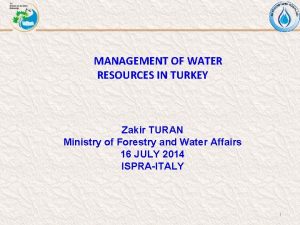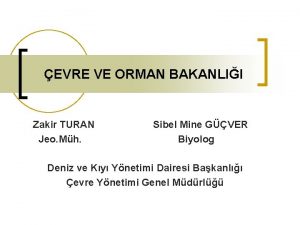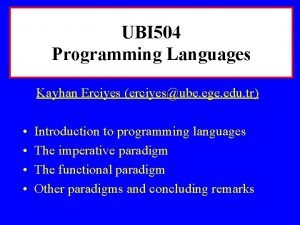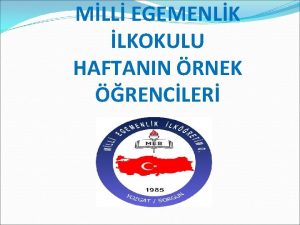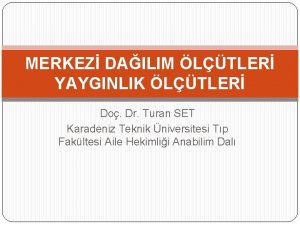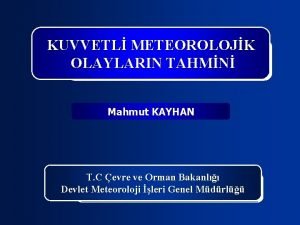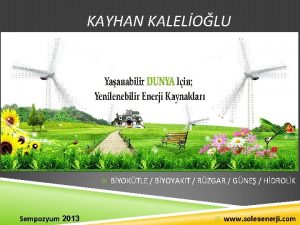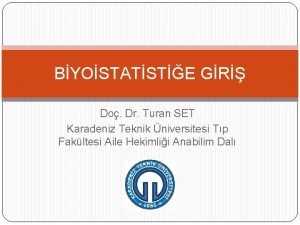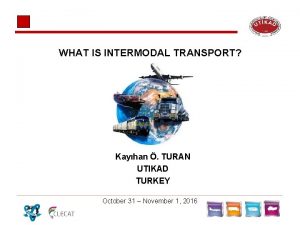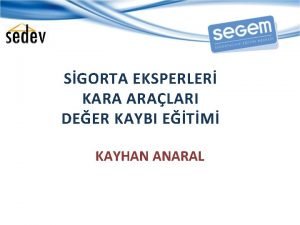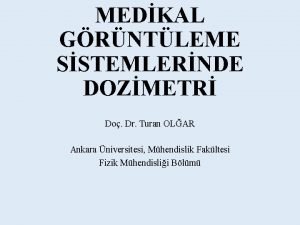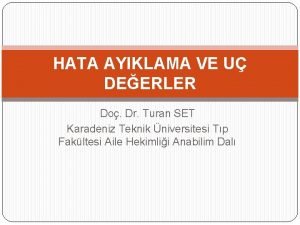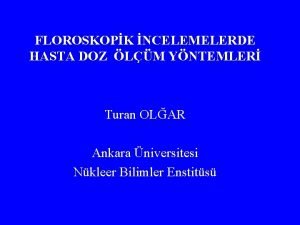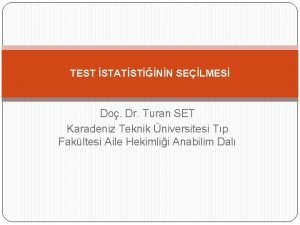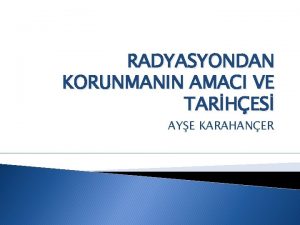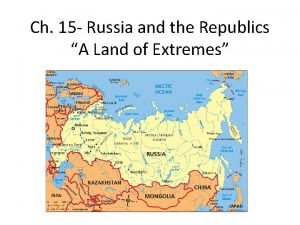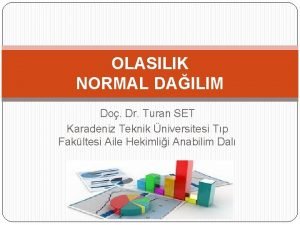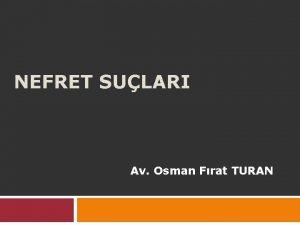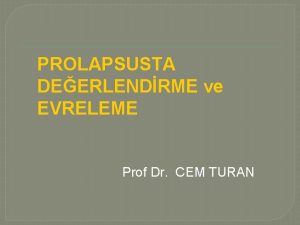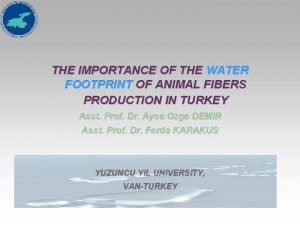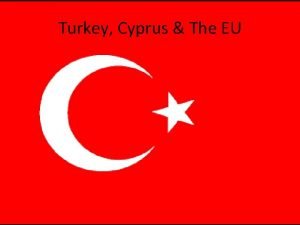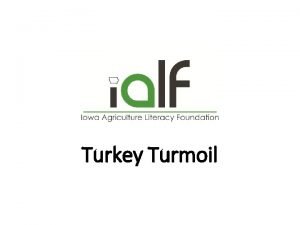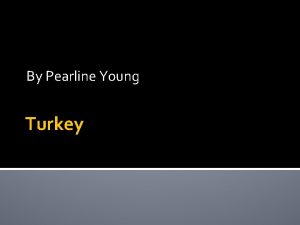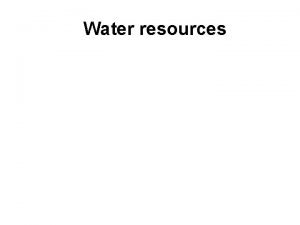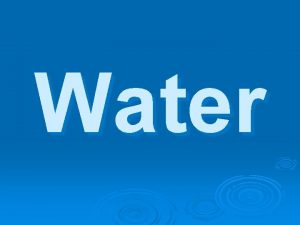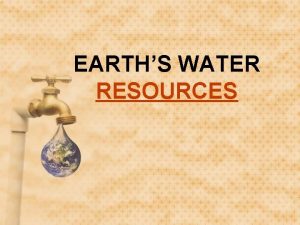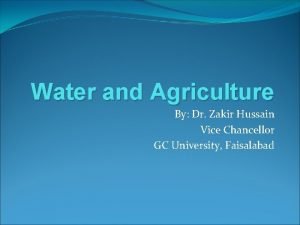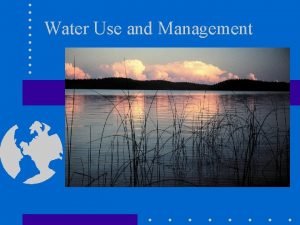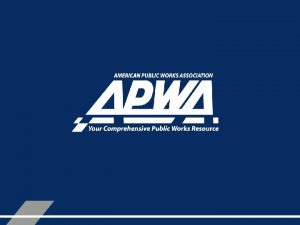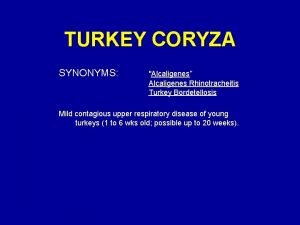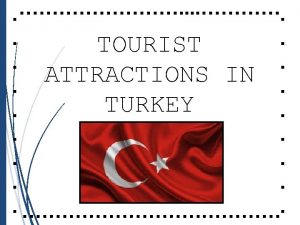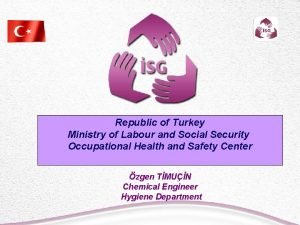MANAGEMENT OF WATER RESOURCES IN TURKEY Zakir TURAN






















- Slides: 22

MANAGEMENT OF WATER RESOURCES IN TURKEY Zakir TURAN Ministry of Forestry and Water Affairs 16 JULY 2014 ISPRA-ITALY 1

CONTENT ü Water-related Institutions and resposibilities ü Existing Water Management Approach ü Organizational Structure of Ministry and DGWM ü Tasks of DGWM ü Completed Projects ü Ongoing Projects ü Determination of Sensitive Areas And Water Qualıty Objectıves On The Basıs Of Watershed In Turkey 2

WATER-RELATED INSTITUTIONS AND RESPONSIBILITIES IN TURKEY ü Ministry of Forestry and Water Affairs (Protection of water resources and planning, and monitoring of water quality, flood control etc. ) ü Ministry of Environment and Urbanization. (Environmental legislation and permits, inspection, enforcement, monitoring and EIA) ü Ministry of Health (control the quality of the drinking water) 3

WATER-RELATED INSTITUTIONS AND RESPONSIBILITIES IN TURKEY ü Ministry of Food, Agriculture and Livestock (Management of agricultural lands, fisheries and aquaculture legislation ) ü Ministry of Culture and Tourism (water, wastewater and solid waste disposal planning of Tourist areas) ü Ministry of Transport, Maritime Affairs and Communications (Ports, all kinds coastal structures, 4

OVERVIEW OF EXISTING WATER MANAGEMENT IN TURKEY ü Pollution prevention-oriented ü Singular solution covering specific water bodies ü Water management approach depend on the administrative boundary ü Not include all actors of Management ü Lack of interinstitutional coordination 5

WHAT SHOULD BE THE WATER POLICY APPROACH? Watershed-based water management Protection of the ecological quality of water Pollution prevention at source Pollution reduction at source Using anti-pollution technologies (cleaner technologies) TO MEET THESE NEEDS. . On 4 July 2011 Directorate General of Water Management was established (GDWM) • • • 6

ORGANIZATIONAL STRUCTURE OF MINISTRY General Directorate for Combating Soil Erosion and Desertification Directorate General of Water Management (DGWM) General Directorate of National Parks and Nature Conservation MINISTRY OF FORESTRY AND WATER AFFAIRS (MFWA) General Directorate of State Hydraulic Works (SHW) Turkish Water Institute General Directorate of Forestry 7

TASKS OF DGWM ü Improve the National Water Policy ü Providing watershed based management of water in Turkey ü Development of Water Law and Legislation ü Interinstitutional Coordination ü Inventory and National Water Information System ü Determining the Quality of Water Bodies ü Development of Water Quality Standards ü Determining of Sensitive Areas (to N/P) and Management ü Flood and Drought Management Planning ü Preparing Monitoring Program( Monitoring Stations, Parameters Periods and Methods) 8

ORGANIZATIONAL STRUCTURE OF DIRECTORATE GENERAL OF WATER MANAGEMENT Directorate General of Water Management Department of Watershed Management Department of Water Quality Management Department of Monitoring and Water Information System Flood and Drought Management Department Inventory and Research Department of Water Law and Policy 9

COMPLETED PROJECTS 1 -RIVER BASIN PROTECTION PLANS (for 25 basins) • Investigation of basin's natural, economic and social structure • Environmental Infrastructure Status (WWTP, Landfill…etc) 2 -POINT SOURCE HAZARDOUS SUBSTANCES POLLUTION CONTROL PROJECT • Specific pollutants levels at water resources, and discharges • EQS for these pollutants • Proposals for methodologies transition to discharge standards were developed. (DESPRO Software) • Hazardous Materials Information System (TEMBİS) was developed. 5. 6. 2021 10

3 -EU TWINNING PROJECT OF CAPACITY BUILDING ON WATER QUALITY MONITORING • The legal and administrative gap analysis • Watershed based Monitoring Program (6 pilot basins) • National Monitoring and Implementation Plan prepared according to WFD • Monitoring Guidance Document was prepared for each basin according to the WFD 11

ONGOING PROJECTS 1 -Pollutıon Control Of Hazardous Substances From Non Point Sources • Inventory of active substances sourced from pesticide • Monitoring of active substances and determine levels and EQS of these substances in water 2 -Detection Of Hazardous Substances in Coastal And Transitional Waters; • Inventory of Hazardous substances sourced from industries • Determination of Hazardous substances from industries discharging to coastal and transitonal waters. • Monitoring of these substances during one year • EQS and Discharge standarts 5. 6. 2021 12

ONGOING PROJECTS 3 -Establishment of Ecological Water Quality Evaluation System The physico-chemical, hydromorphological and biological quality elements to be monitored during a year in the 8 basins Preparation of aquatic flora and fauna species list The development of biological index 4 -Capacity Building on Water Quality Monitoring (Technical Assistance Project) • The physicochemical, biological and hydromorphological monitoring studies in Büyük Menderes Basin during one-year • Determining the ecological status of the Basin by using the results of monitoring 5. 6. 2021 13

ONGOING PROJECTS 5 - Capacity Building for the Implementation of Floods Directive in Turkey • Legal, institutional and technical gap analysis • Preparation of Flood Risk Maps for Western Black Sea Basin • Preparation of National Implementation Plan 6 -Impact of Climate Change on Water Resources Project • Regional climate model will be formed at least three global climate models and two emissions scenarios. • For the years 2015 -2100 temperature, precipitation, evaporation, projections will be prepared • The impact analysis of climate change to drinking water, agriculture, industry sectors and ecosystem will be done 7 -Determınatıon of Sensitive Areas And Water Quality Objectives On The Basis Of Watershed In Turkey 5. 6. 2021 14

AIM OF THE PROJECT To determine sensitive water areas in terms of water pollution, nitrate vulnerable water areas in the surface waters, nitrate vulnerable zones that affect these areas, water quality objectives and measures to be taken to improve water quality in twenty five river basin in Turkey. Executive of the Project: TUBITAK Marmara Research Center Duration of the Project: 2012 -2015 15

THE SCOPE OF THE PROJECT Determination of Water Bodies in surface waters Monitoring on potential sensitive areas (DO, p. H, T, TN, TP, TOC, PO 4, NO 3, NH 4, secchi disk, klorofila, SS, bilogical parameters) Determination of measures to be taken for all water bodies in line with the water quality objectives (including wastewater treatment systems) Determination of Pressures , Determination of Potential Sensitive Areas (Pressures –impacts, monitoring data, expert opinions) Determination of final sensitive areas Determination of the reference water bodies and water quality objectives impacts and pollution loads (BOİ, KOİ, AKM, TN, TP, NO 3, PO 4) (by monitoring data) Development of water quality models for our country Determination of carrying capacity in lakes, dams in terms of nutrients Preparation of legislation, guide documents, measures program C, N, P 16

WATER BODIES WAS DETERMINED Water Bodies of Konya Basin Number of water bodies in 25 river basins River Lake Total 1814 656 2470 17

SENSITIVE AND LESS SENSITIVE AREAS ALONG COASTAL AREAS (2007 -2011) ü MORPHOLOGY (Close / Open, Slope) ü HIDROGRAPHY(Flow /Water exchange) ü MARINE WATER QUALITY (Trix İndex, O 2 saturation, Clorophyil-a, Secchi Disk) ü LAND BASE POLLUTION SOURCES 5. 6. 2021 18

Determination of Potential Sensitive Water Areas ü Morphological and geographical features üPressures and impacts, üHydro-dynamic properties, üBio-chemical properties, üPollution loads on the basis of wastewater sources and water quality monitoring data, ü SWAT Modelling and Carlson Index 5. 6. 2021 19

Monitoring on Potential Sensitive Areas Parameters p. H Temperature Dissolved Oxygen Secchi Disk Depth Chlorophyll-a Suspended Solids Total Organic Carbon Total Nitrogen Nitrate Ammonium Total Phosphorus Phosphate Phytoplankton Macrophyte Macroinvertebrates 5. 6. 2021 Fish Sampling Frequency (Number of Sampling per year) Lakes/Dams Rivers Depth Shallow 4 (Seasonal) 4(Seasonal) 4 (Seasonal) 4 (Seasonal) 4 (Seasonal) 4 (Seasonal) 4 (Seasonal) 4 (Seasonal) 4 (Seasonal) 4 (Seasonal) 2 2 20

Conclusions With the completion of the project, ü Sensitive water areas and nitrate vulnerable zones will be determined ü Measures that need to be taken for improvement of water quality and control of the pollution of point and diffuse sources will be assessed. ü Regulations, guide documents will be prepared. 21

Thanks for your attention. 22
 Zakir turan
Zakir turan Zakir turan
Zakir turan Water and water and water water
Water and water and water water Kayhan erciyes
Kayhan erciyes Kevser turan
Kevser turan Kayhan turan
Kayhan turan Kayhan turan
Kayhan turan Kayhan turan
Kayhan turan Turan set
Turan set Cem turan bilgisayar mühendisi
Cem turan bilgisayar mühendisi Kayhan turan
Kayhan turan Değer kaybı hesaplama
Değer kaybı hesaplama Turan olğar
Turan olğar Kayhan turan
Kayhan turan Kayhan turan
Kayhan turan Kayhan turan
Kayhan turan Turan karahaner
Turan karahaner Turan
Turan Dailim
Dailim Nefret piramidi
Nefret piramidi Osman kaya turan
Osman kaya turan Puboservikal fasya
Puboservikal fasya Water footprint turkey
Water footprint turkey
